No comments. Apologies.
We suffered a site hiccup last week and the comments section of the blog was hidden until Wednesday. We love getting reader’s comments so we were disappointed. Thankfully our friends at Bronco fixed the issue and all should be working well again.
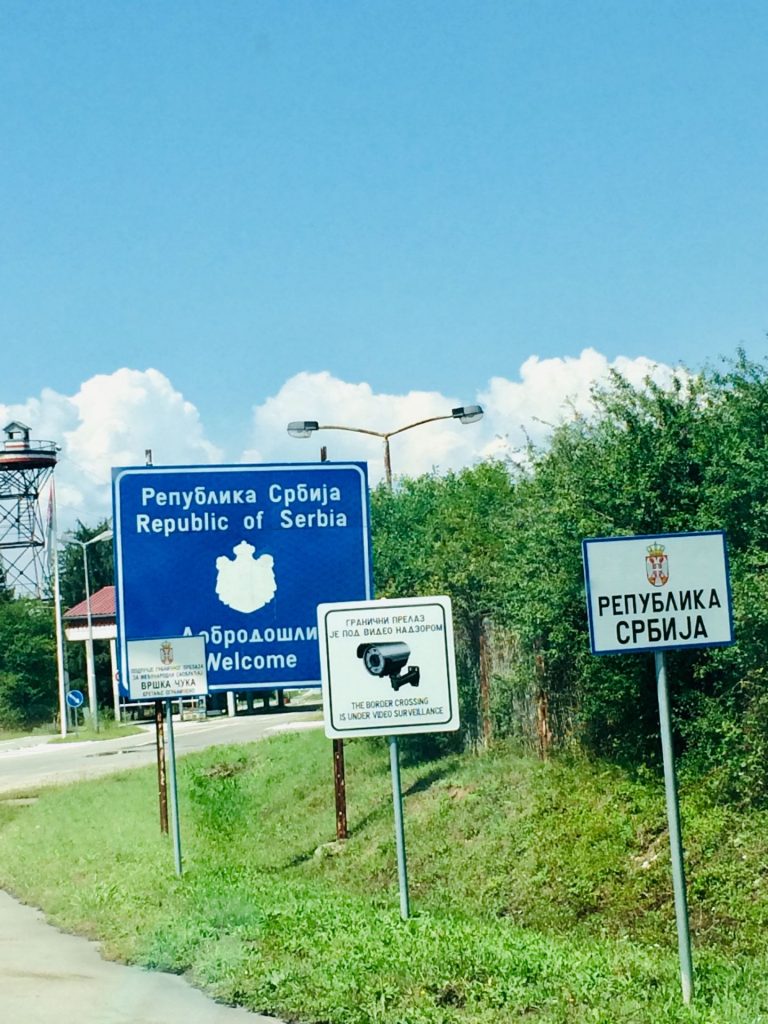
Border crossing. Serbia.
The Vrska Cuka border was quiet.
Its approach road was all but overgrown. A wide two lane road, brought down to one by the hedgerows.
At the check point there was us. And a single truck. And twenty odd bored border guards.
One in particular, with a tight cropped moustache, and tight bottomed polyester pants, has pictures of a certain Austrian painter on his bedroom wall (in his mother’s house). You know the one.
Having checked our documents he left us. With the barrier down in front of us.
I swear he spat when I went back to his little hut a while later to ask whether we were free to continue.
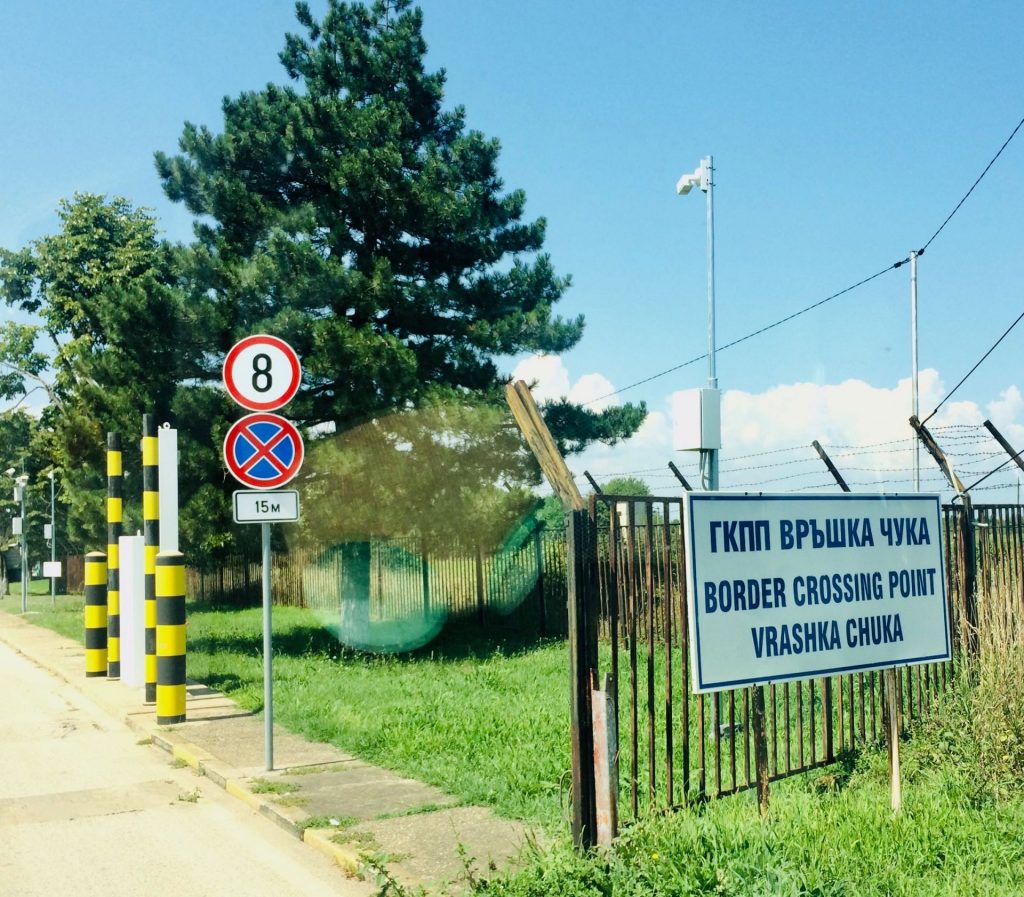
The Serbian side was easy.
Suddenly we were through.
And despite all that we had heard, the roads were immediately better, the land more managed, the villages, from the very first, looked more inviting.
We probably would have liked the first town of Zaječar, except that we couldn’t find shade for ArchieVan, and it was mighty hot.
Instead we pressed on down to Niš.
The Balkan Range.
The crops, where there’s room, are the Euro standards of maize and sunflower, but between these in smaller spaces vines and a hundred other foodstuffs are grown.
The mountains are more peaky, with bigger sheer cliffs that must delight the climbers. The road meanders between it all, generally with a good surface.
Village speed limits are low, and pedestrian crossings are observed, typically with folk striding out and not even looking at the traffic.
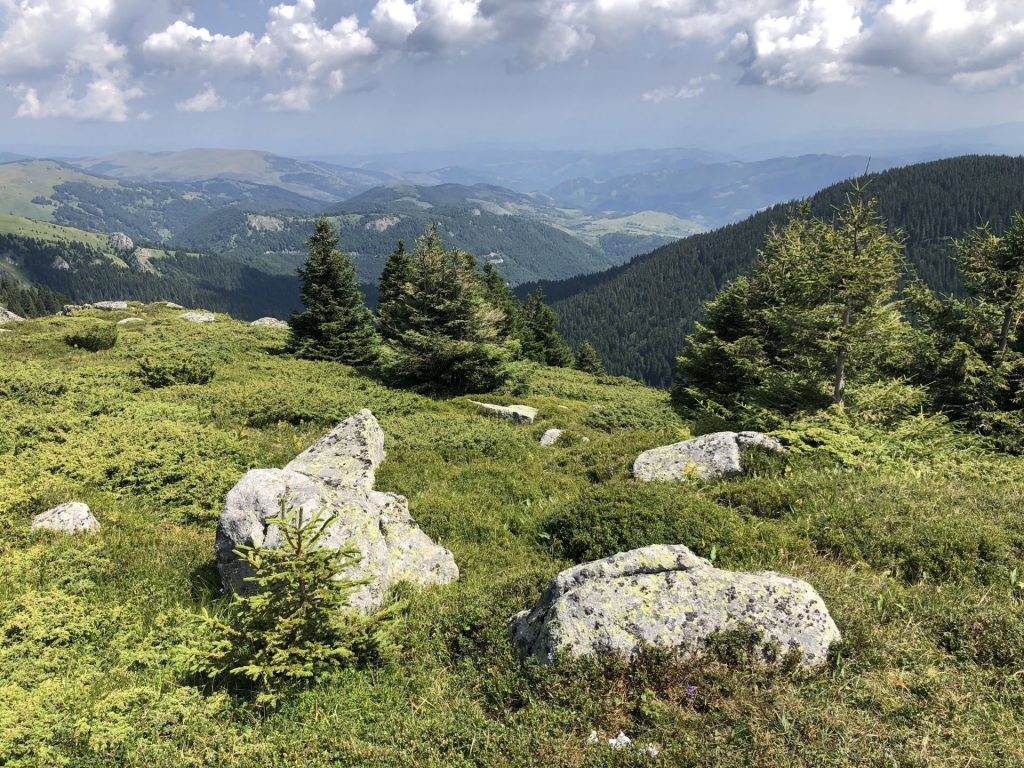
Niš.
Serbia’s third city was largely destroyed in WW2, making way for a modern town that’s easy to navigate. We parked up between its large sports complex and a huge park. It wasn’t the quietest of places, but it was convenient.
The Turkish fortress dominates the north of the town with the Nišava River flowing between it and the modern centre.
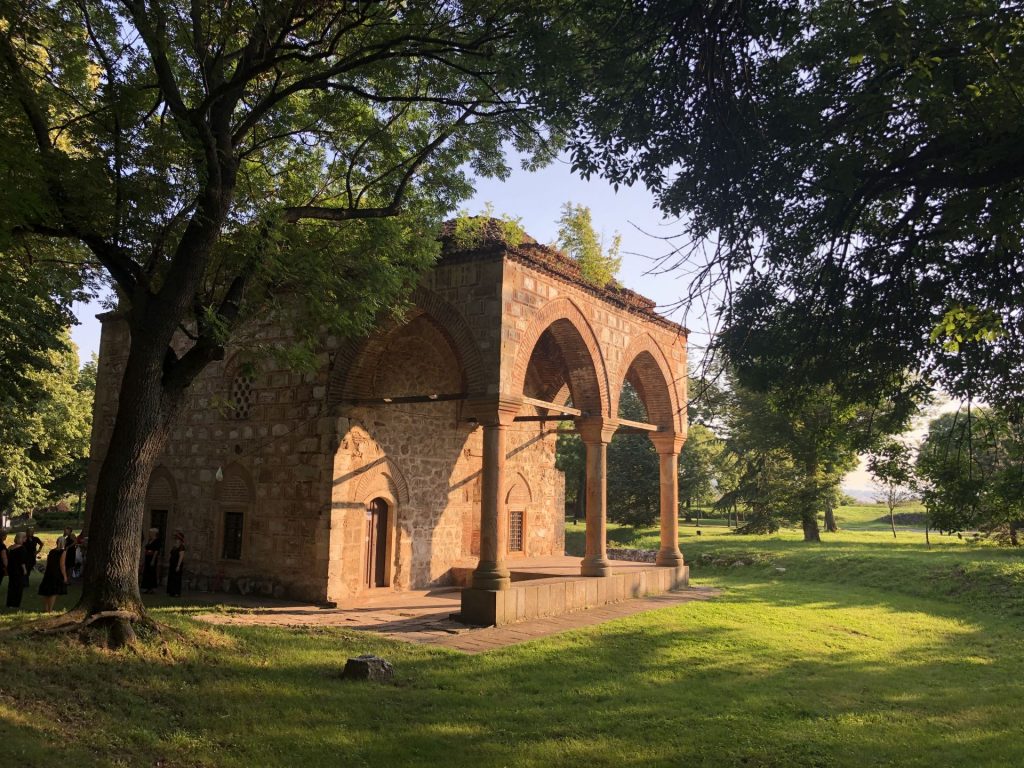
Mask wearing is taken seriously here. More than 60% of people are wearing masks, although a few too many are worn as chin guards, I’m not sure how effective that is.
In the evening the park becomes a centre of life with hundreds, perhaps even thousands of people taking a stroll. Children seem to be allowed free rein as the parents engage in coffee and serious conversation. Even after dark little ones run unrestrained.
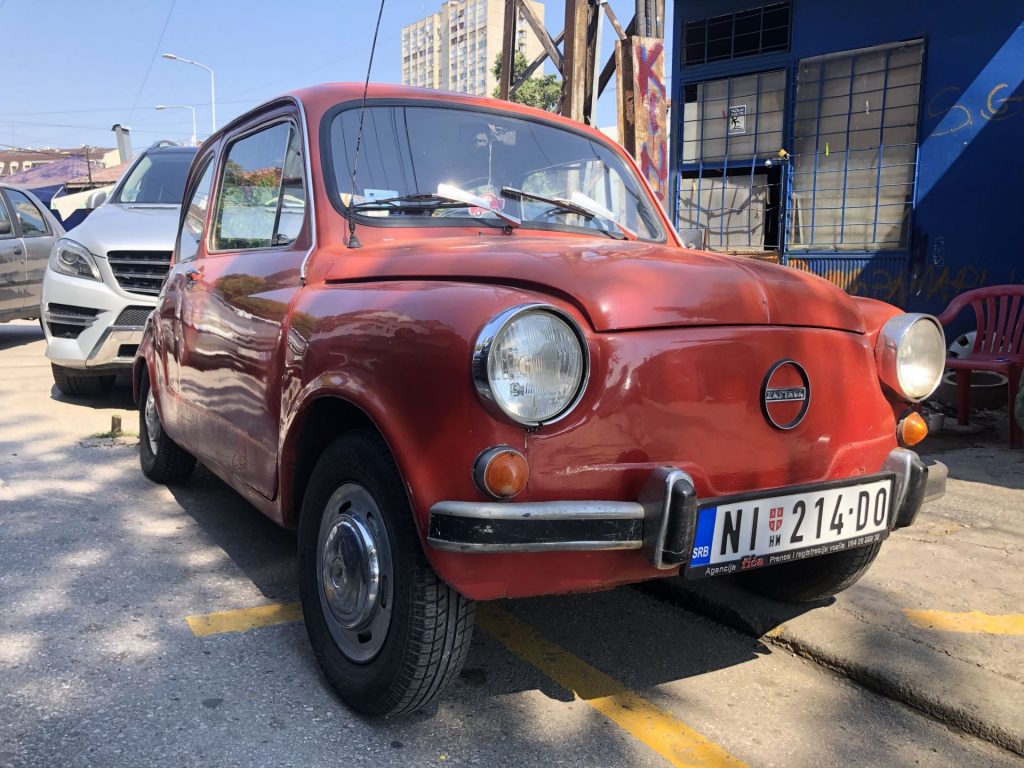
Morning. Lycra.
In the morning the park becomes lycra zone. People run in lycra. There are people rollerblading in lycra. People lift weights in lycra and people do yoga in lycra. Girls even serve coffee in lycra at the many bars on the strip.
Everyone is on the pull. Watching to see who’s watching them.
And 1 in 10 seems to have a very small white fluffy dog.
All over town there are too many tall people.
Many women are my height.
Loads of the blokes are taller than me.
This isn’t fair – I was the tall guy once.
Many are damned good looking too.
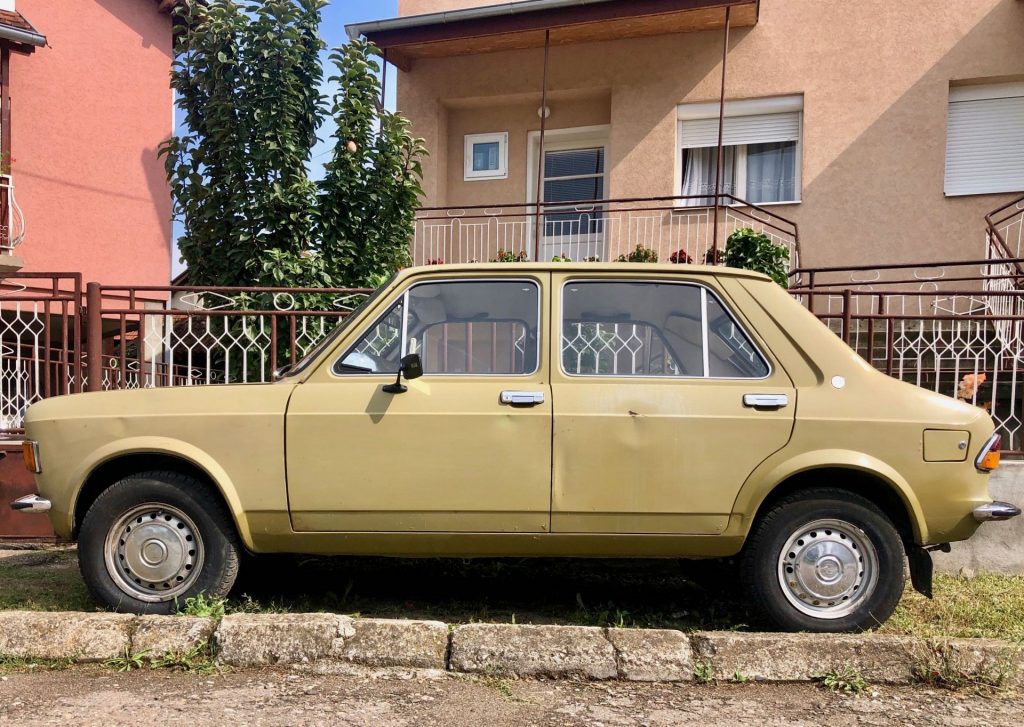
Connected.
Serbia will probably join the EU next year, but until that happens using your mobile here is bloody expensive.
Unless you buy a local SIM.
Our airtime supplier EE wanted £6 a day for a pathetic amount (150mb) of data here.
Telenor sold us a 50 gig SIM for less than a fiver. That’s a fraction of the cost of our monthly contract.
Genius. We’ll have two please.
Spomenik.
What a curious word. One we learned thanks to a chance meeting with an American traveller at the Corinth Canal back at Christmas. Ron was heading to the former Yugoslavian countries hunting Spomenik.
Spomenik is Serbo-Croat for monument. We (English language users) apply the term to the massive abstract concrete memorials to battles in the Balkans against the Nazis. They are a legacy of a bygone era, they bare witnesses to suffering, they are objects of anger, they are testaments to triumph, symbols of resentment. Unfortunately too, they were seen as symbols of the old regime when Tito’s Yugoslavia was crumbling. Many were destroyed. Still, hundreds remain.
Bubanj Spomenik.
Our first was on the Bubanj Hill above Niš. Here some 10,000 citizens were slaughtered by the Axis forces. The three incredibly huge fists symbolise the victims, men, women and children. Elsewhere a marble wall represents the German gunners, enslaved peoples, those shot dead, survivors rising up as the defiant fists. It’s powerful.
The lamppost to the right of the first fist gives a hint of scale.
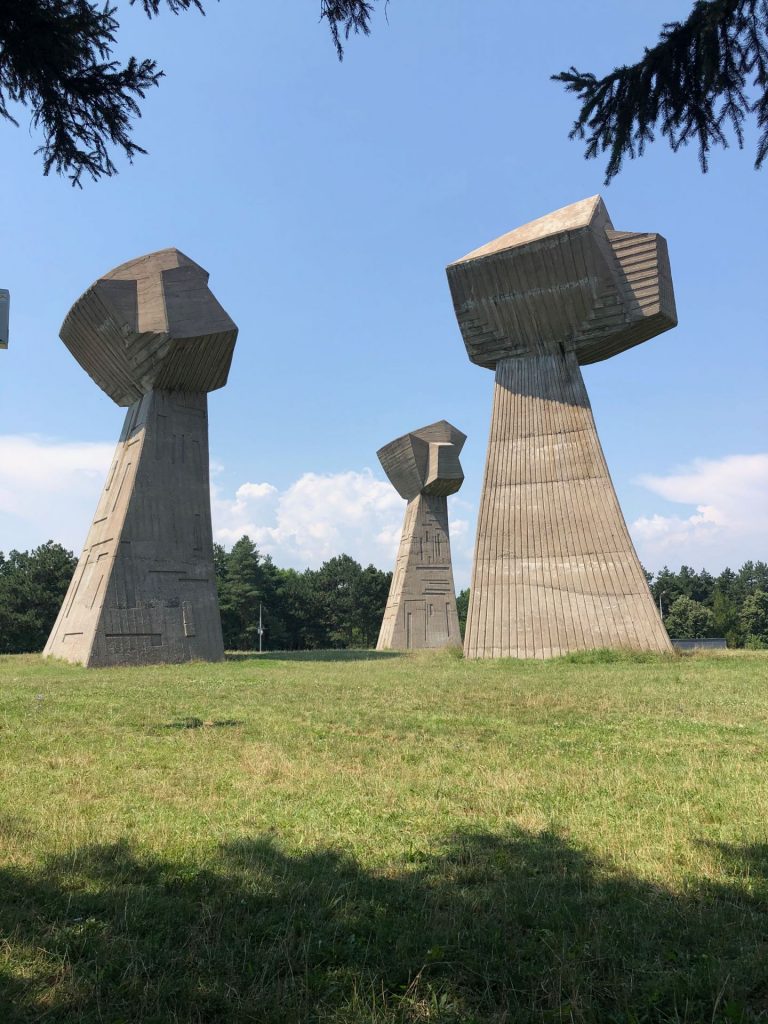
Skull Tower.
The Balkan countries been in conflict through much of history. When not fighting a common enemy the states often fought each other. Their longest occupation was by the Ottoman Empire, that lasted four hundred years.
After a failed uprising in Niš in 1809 the Pasha decapitated the slaughtered rebels and had a tower built of their skulls.
They didn’t mess around in these parts!
Most of the thousand skulls have disappeared over the years, as mementos, or taken by family hoping to bury their dead, but enough remain as a gruesome reminder of the barbaric reprisals visited the enemy.
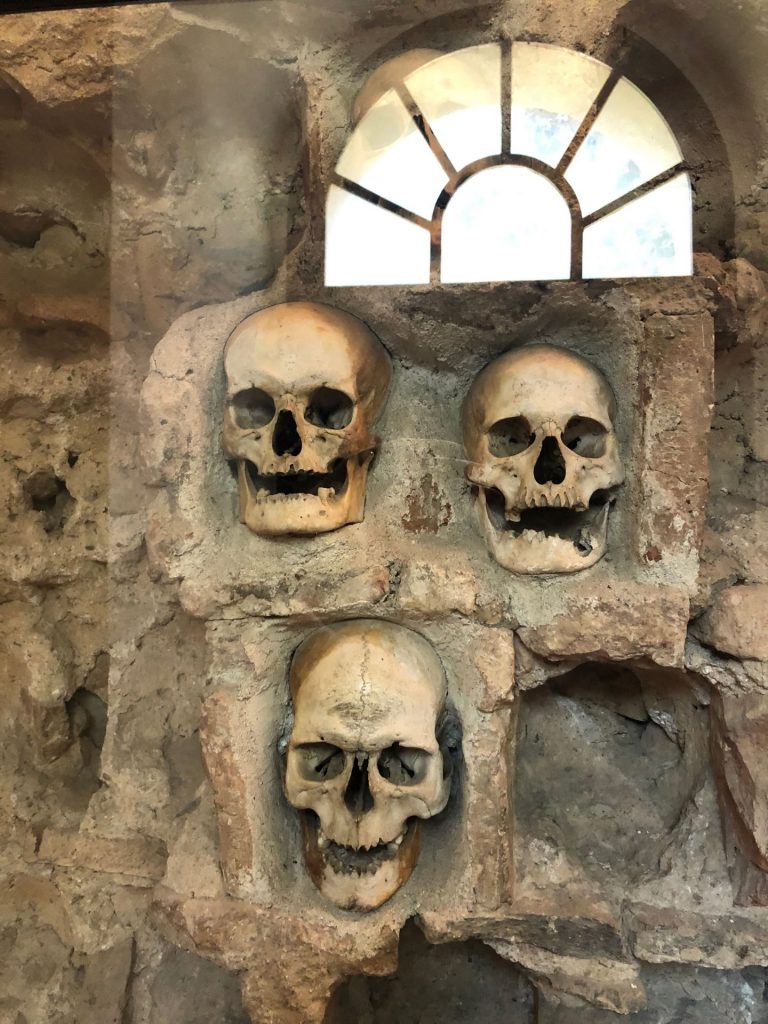
To Pirot.
The biggest surprise here is just how smart everything is. I guess most places are going to look good after Bulgaria, but the stories I’d heard of extreme poverty have yet to manifest themselves.
There’s nowhere near as much litter.
In towns the 1950s precincts may look worse than anything in Coventry or Birmingham’s suburbs, but they’re busy with smart people and that makes them feel comfortable.
It’s masks all the way if you’re stepping in-doors.
The motorway to Pirot in the south east links Belgrade to Sofia. The Serbian section is an immaculate strip of engineering, with well lit tunnels and frequent stopping places. Even Germany would be hard-pressed to show something better.
The road is empty, the only cars are German, Dutch and a few British.
Pirot has a well preserved Turkish fortress but is generally an unattractive town of 50s and 60s apartment blocks. Its interest comes from how different these buildings feel compared to their counterparts in the UK.
After pizza at Mama Rossa’s we wandered among the tower blocks that look as scary as anything in Glasgow or Salford, yet here it feels warm, friendly and safe.
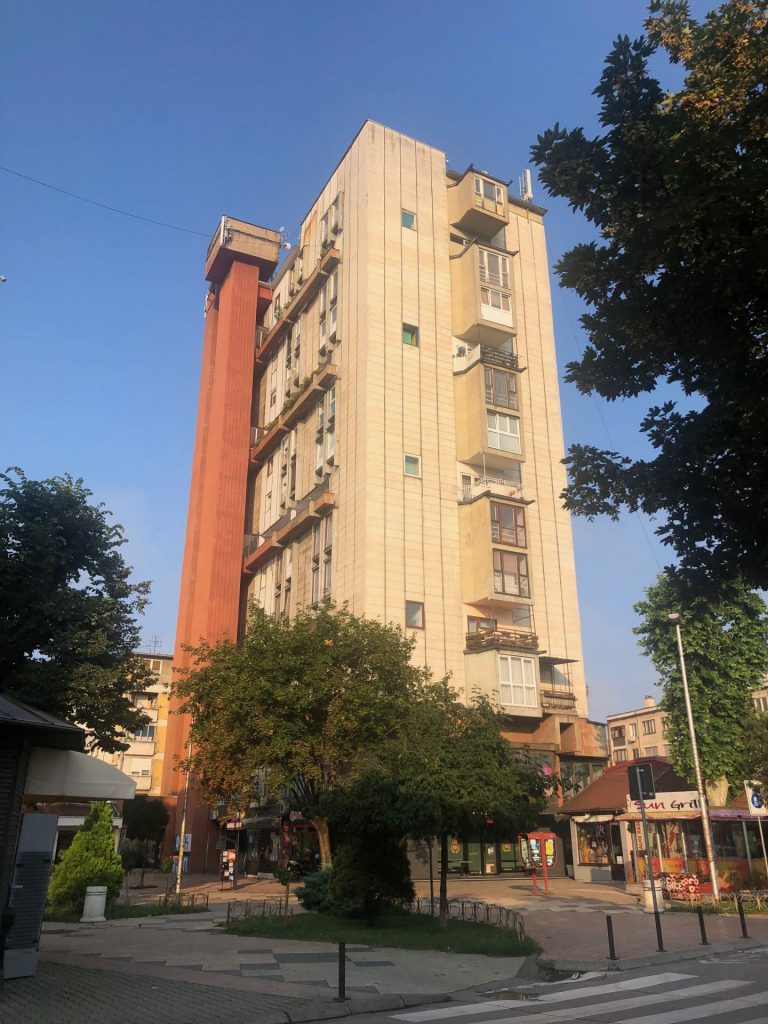
At night young girls walk to meet friends unafraid. There is no feeling of threat.
We’re not complacent. We’ve heard enough horror stories to keep us on our guard, but so far this country feels more like Greece than a Balkan wild card.
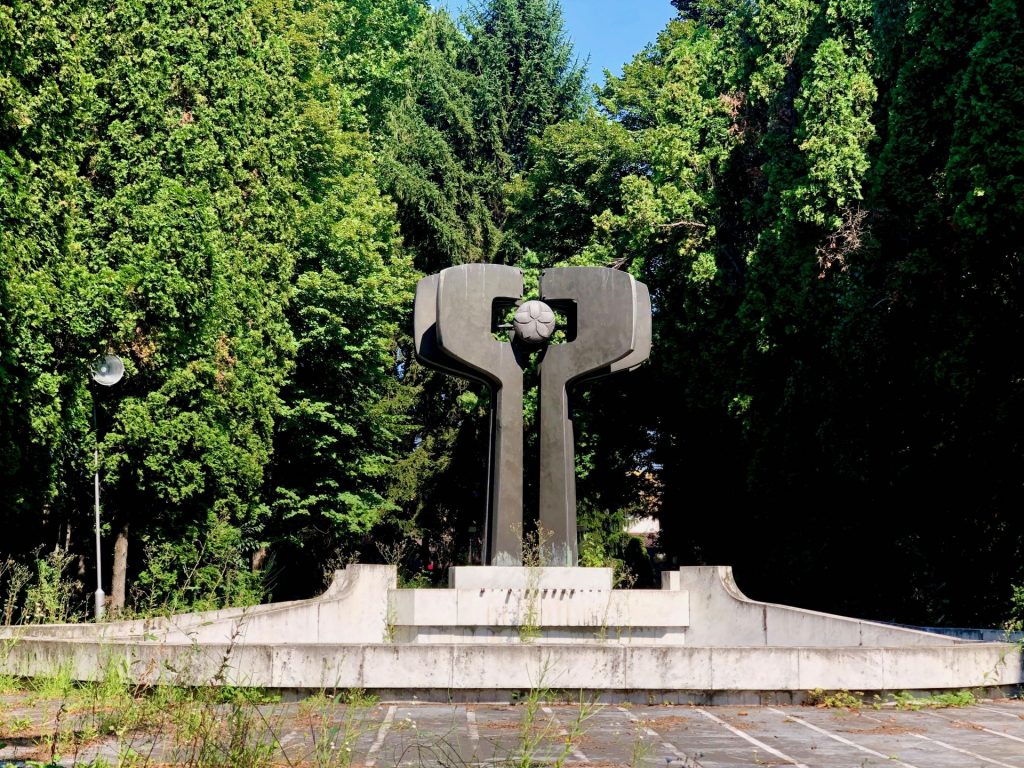
Around the early morning market I’m surprised at how many bakeries there are. There are little shops no bigger than the van that sell a single bread type, and other bigger shops with a wide range. All survive. In fact retail is alive and well here in a way that I don’t ever remember from small town Britain.
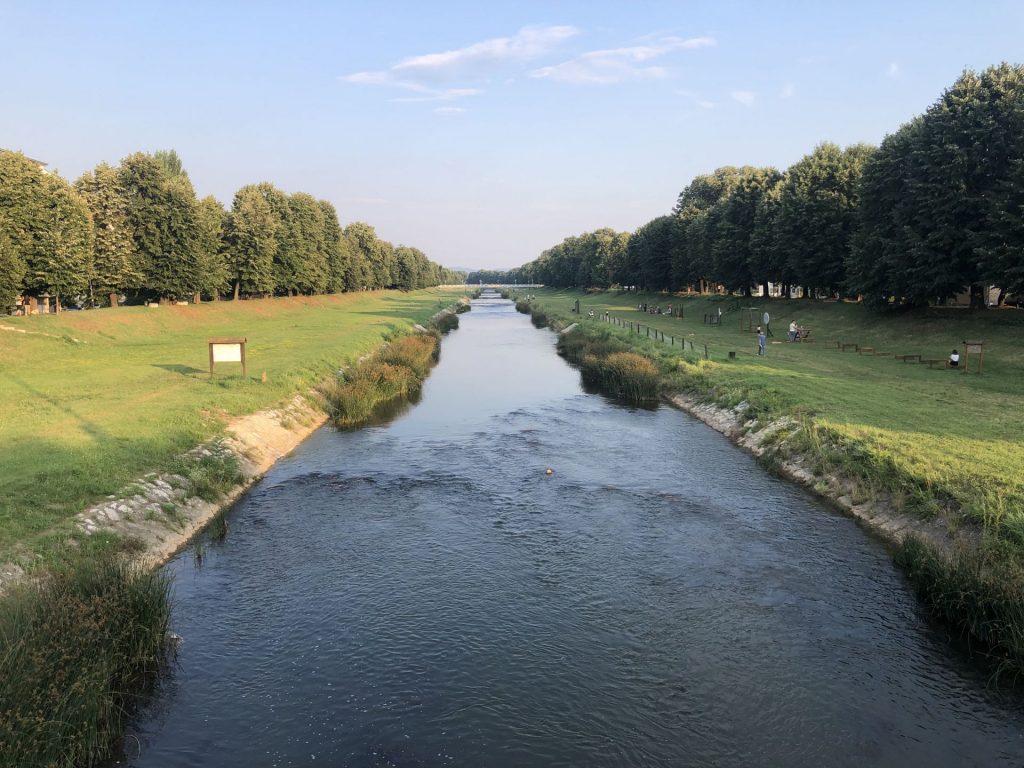
Caričin Grad.
Emperor Justinian, the emperor who never slept, ruled the Eastern Roman Empire for nearly 40 years in the AD 500s.
Apart from overturning the holy Roman law he built the city of Justinia Prima near his birth place in Serbia. Covering 8 hectares the city looks better today that some places we’ve seen from the 1950s. It’s easy to make out the nine basilicas, the protective walls and the bishop’s palace. It’s also easy to see for 50 miles in any direction from the top of the ancient city. 9 churches? He must have been an extreme believer.
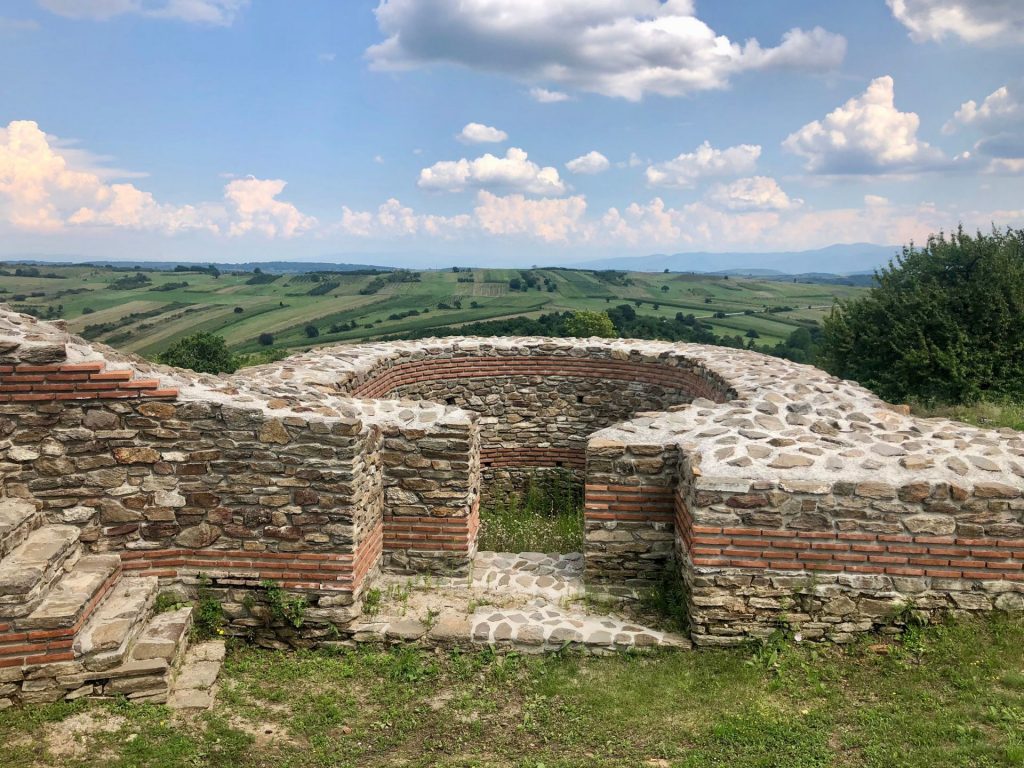
Into the hills.
The small road became smaller.
The trees from one side touch the trees from the other side.
No big vehicle has passed this way in a long time.
We’re both knackered. Suggested stopping places come, and are passed as unsuitable.
We start to climb. And climb.
We haven’t passed another vehicle in an hour.
We’re not sure if there will be an end to this tiny road.
At a peak there’s a simple space on the roadside that looks solid.
We’ve been driving for four and a half hours even though we’ve only covered a hundred miles. Anything will do.
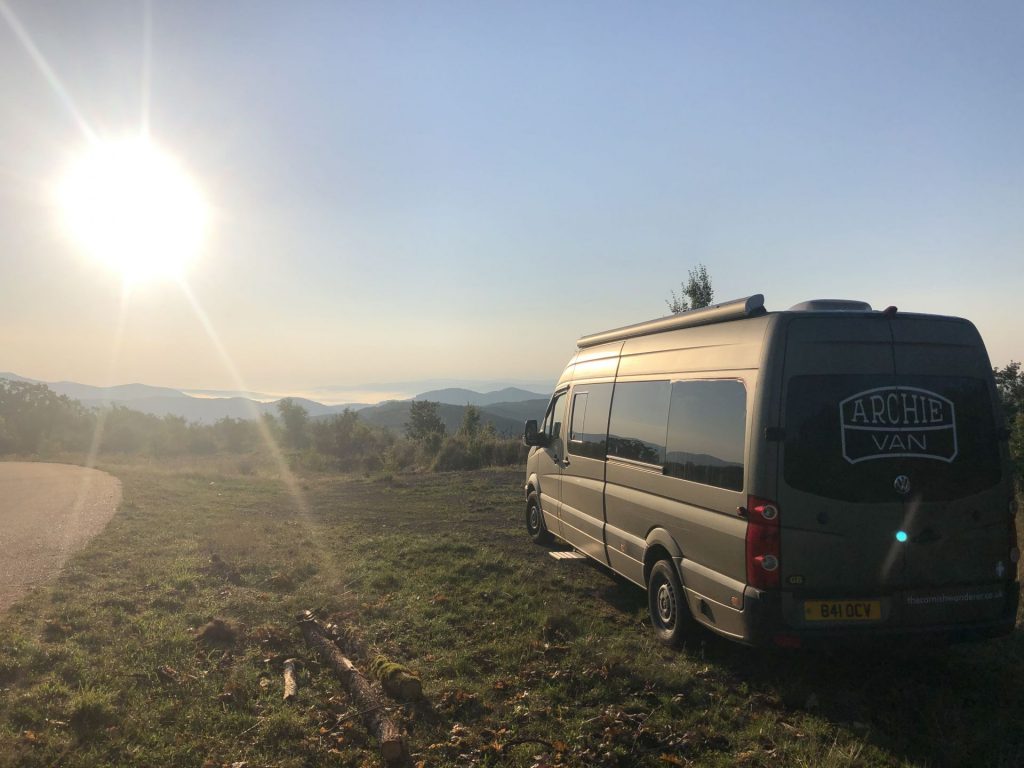
VW Golf Man.
VW Golf Man pulls up and smilingly tries to explain something.
We have no idea of the important thing he’s trying to tell us.
Google tries to help. Google told us that he said “I went to the sea, I don’t know where he went so I could show him the way.” Not a lot of help there, but our man is very keen to make us understand that there’s a problem ahead.
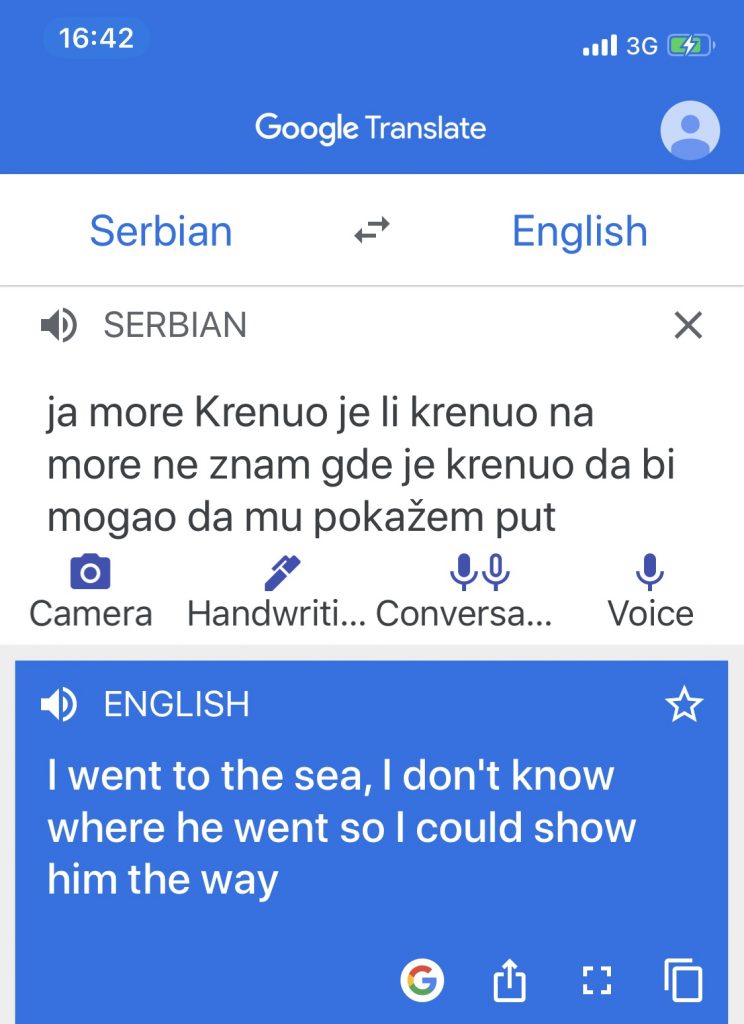
Eventually with smiles and a wave he drives off in his ancient Golf. Inviting us for drinks in the town below. I decided that I’d cycle ahead a few miles tomorrow and worry about his message then if necessary.
Early in the cool of morning Polly and I stanked forward along our route, and soon realised the problem.
The tarmac ended within a few hundred metres. The remaining road, although good enough for Google, and ideal for little Billy, our Greek Fiat Panda, wasn’t good enough for ArchieVan.
We’ll have to backtrack a good 12 miles of narrow mountain road, then find a new approach.
Were we worried about 12 miles backtrack? Nah, that’s nothing.

Backtrack big time.
The next try at getting to the weird rock formations of Devils Town was the big backtrack.
This time we crept along another mountain climb for close to 20 miles, past villages pretty with flowers and red roofed clay brick houses. Cows grazed the roadside, or occasionally wandered with their master like lovers on a stroll. The roadsides were piled high with winter logs that would give their first warmth from the effort to cut them to fire size. Barns were stacked high with drying maize cobs.
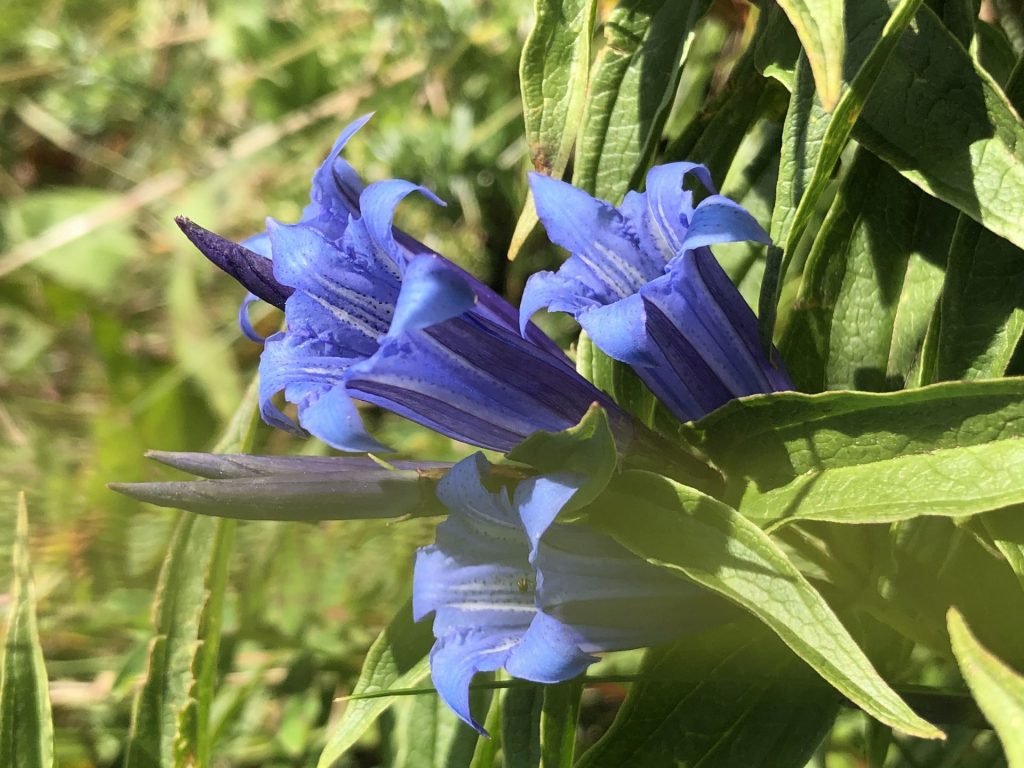
Despite joining nowhere to nowhere the road was marked out as two lanes and was generally in good repair. Until it wasn’t.
With no warning the decent enough road suddenly wasn’t a road anymore.
There was a bench, with some sort of shelter, and then the tarmac stopped.
OK. We could have continued along the dirt track, but when the van is your transport, and your home, you tend to be a little more precious with it than you might be a car.
We turned around (no small feat), and backtracked again.
Along the way we spotted a free spomonik. This one was in what was once a memorial garden, that’s now where people come to dump their empty beer cans and used wet wipes. Local women stare at me in disbelief as I forge through the long grass to take photos of the wonderful monument that they stopped seeing shortly after its inauguration.
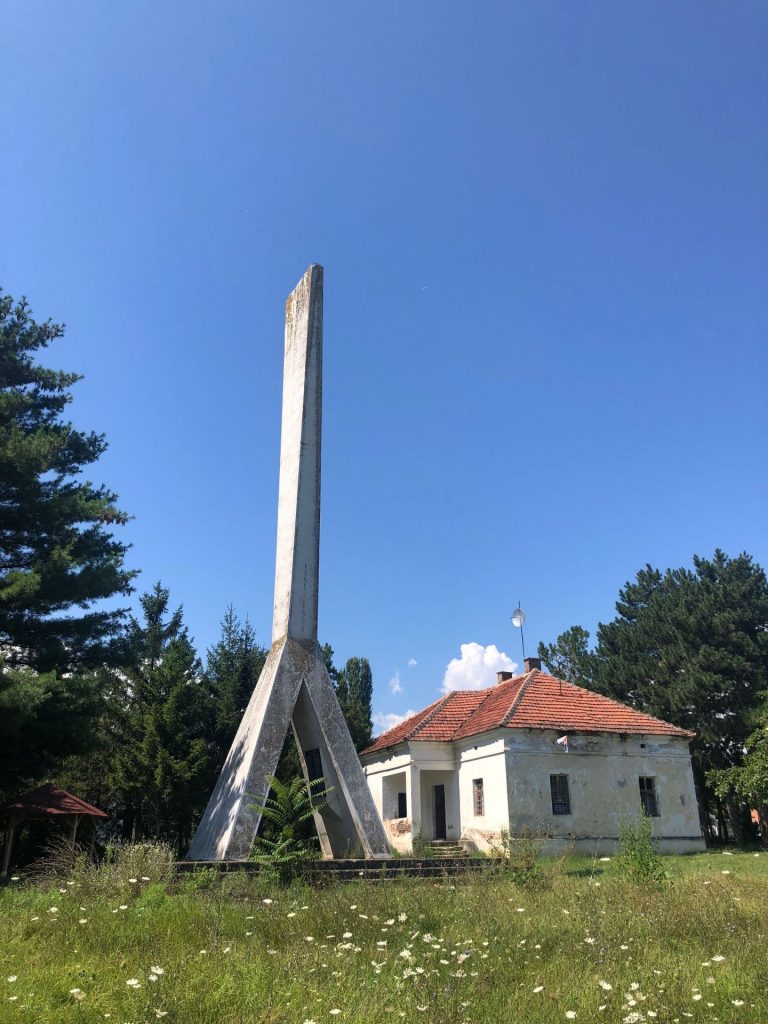
A few slow hours later we’re at 1750m outside Kapaonik, the country’s main ski resort.
130 miles. It has taken five hours.
We’re exhausted. We hope not to drive tomorrow.
For now it’s dinner outside a café, despite the children on holiday, despite the parents suffering the children on holiday, then it’ll be an early night and tomorrow can be another day.
Kapaonik.
Ski resorts look pretty similar the world over. Yet some manage to look stunning at any time of the year, especially in Austria. Kapaonik doesn’t.
The twelve or so mile climb is beautiful. Occasionally the road opens to views across the Balkan Range that offer 50 miles or more of forested mountains receding into the distance.
All that builds excitement that’s dashed by the resort.
There are hundreds of cars, mostly from distant Belgrade, mostly black, and mostly greyed by road grime. Unless you’re at The Goodwood Revival an unruly slew of cars is rarely pretty.
There are hundreds more people. None in masks, despite most of them coming from the capital which is the country’s main virus hotspot.
We moved out of town a little way. Parked on the verge. All was calm for a cool night and a much needed deep sleep.
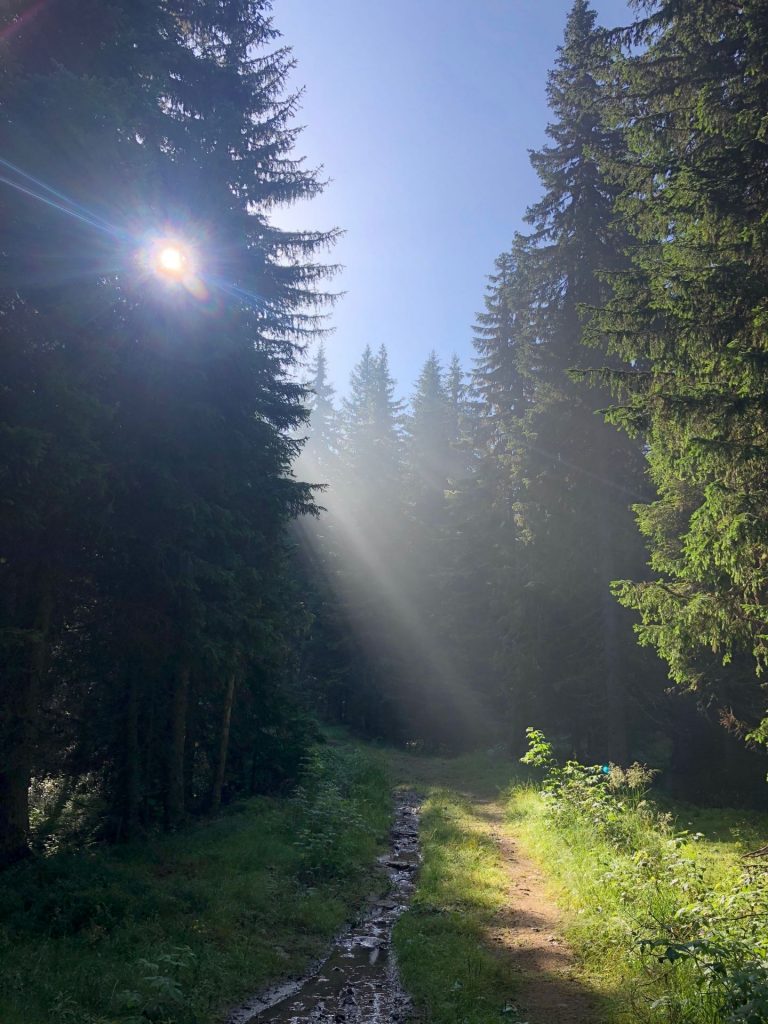
The great thing about town people venturing into the countryside is that they don’t tend to venture far.
Polly and I soon escaped into a near wilderness of forest and trekked through early morning dew. All was calm.
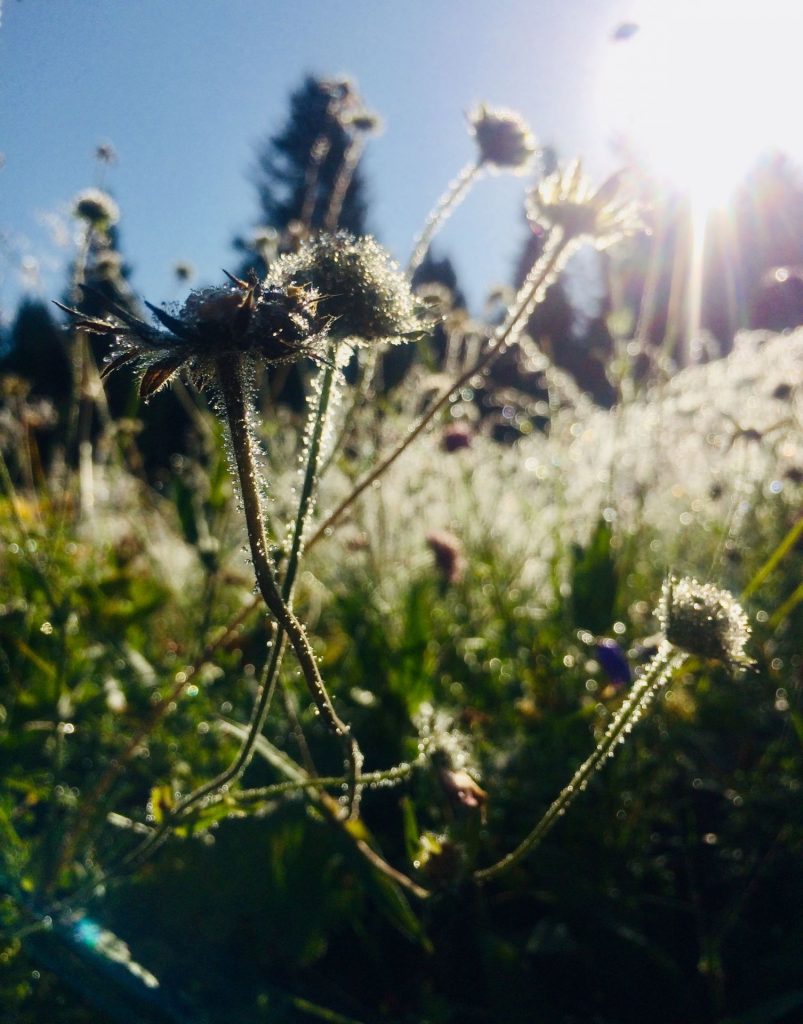
Serbia.
After a week we’re still surprised by the country.
It’s smarter than we expected.
Travelling west has taken us through some shabby places such as Leskovac. There, the car dismantlers and tyre jacks mix with melon sellers along the dusty wide and undefined road in a scene that’s almost Moroccan. As a whole though the countryside is pretty in an Alpine fashion, villages tend to be small collections of red roofed houses with an ill defined shop which also serves as a bar. Homes from the last few decades are built of continental air bricks, then generally left unrendered. There’s a trend for exterior insulation on older concrete places with 100mm of warmth that’s then plastered over and painted giving an immediate lift to the appearance.
I’m always excited by barns and here they’re stone based with open timber upper structures that may hold cereal crops, timber or drying maize.
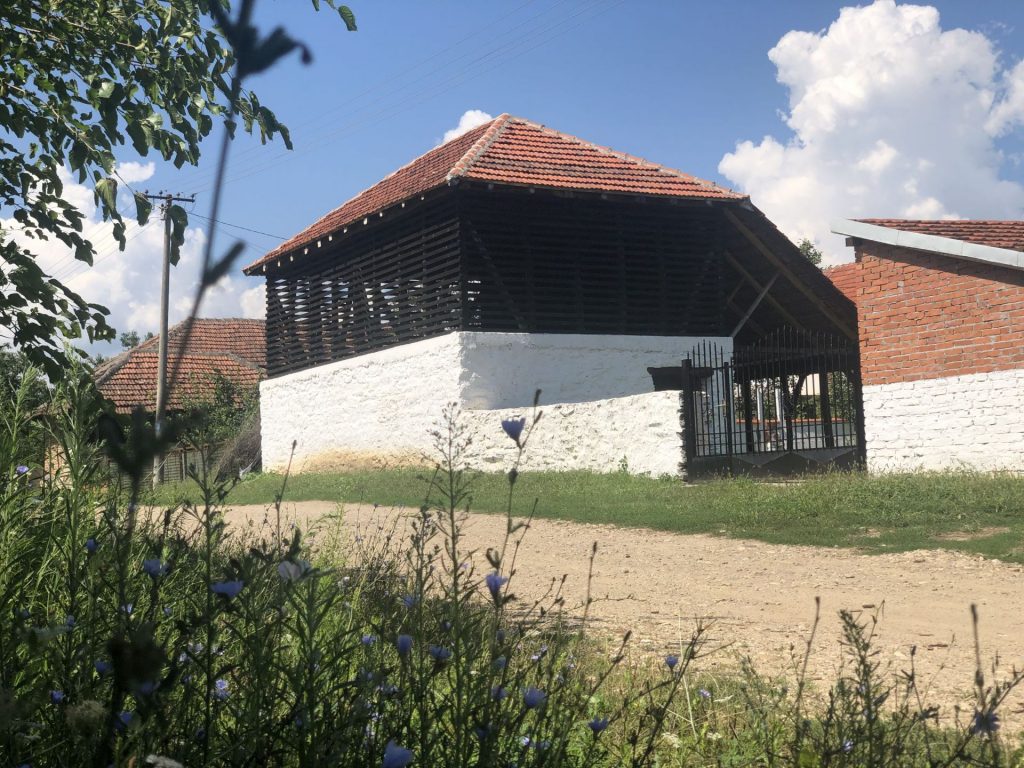
Roads have a tendency to disappear beneath your wheels and surfaces off the beaten track are a challenge, but nothing like as bad as Greece.
While Yugoslavia was the only Iron Curtain country to open to tourism it has been a lot of years since foreigners came here in their droves. In Medveda, a border town before Kosovo everyone came out to stare, and a few missed turns meant we came back to parade in front of them several times. We were back to wave again next day.
Unfortunately people’s reaction to a beauty spot is to bring their rubbish and sling it from their car windows, rather like Romania and Bulgaria. Although it’s not as bad here it’s still depressing.
Young people are generally friendly, keen to speak English, their parents are more reserved, but who can resist a Wanderer’s wave and beaming grin?
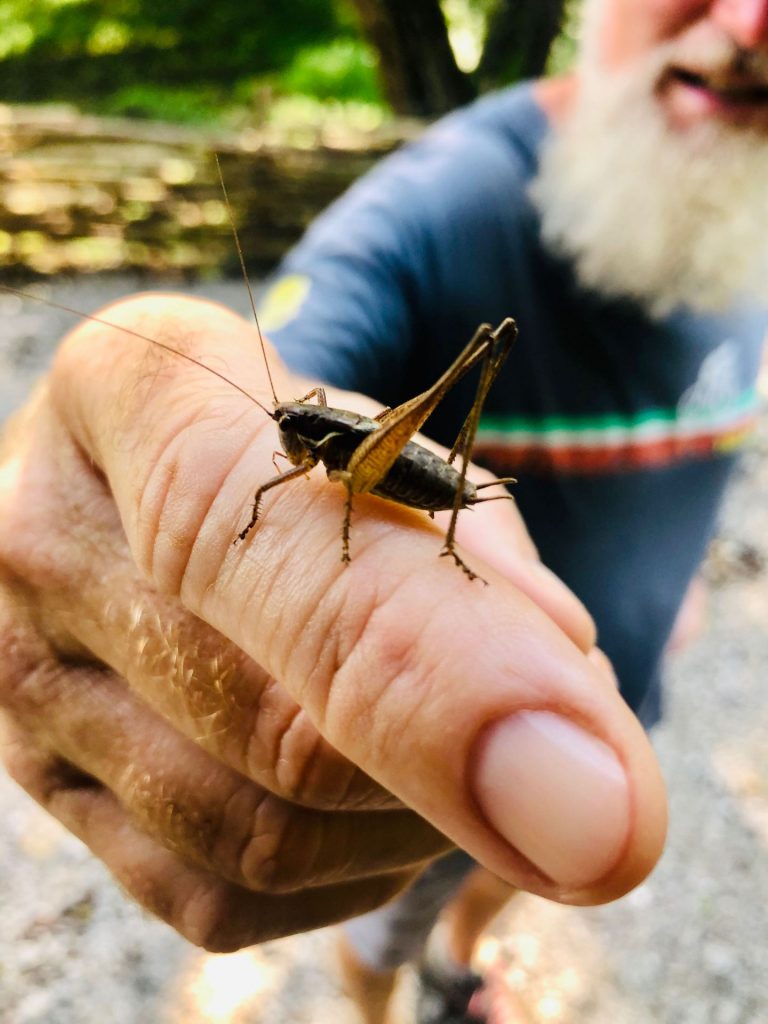
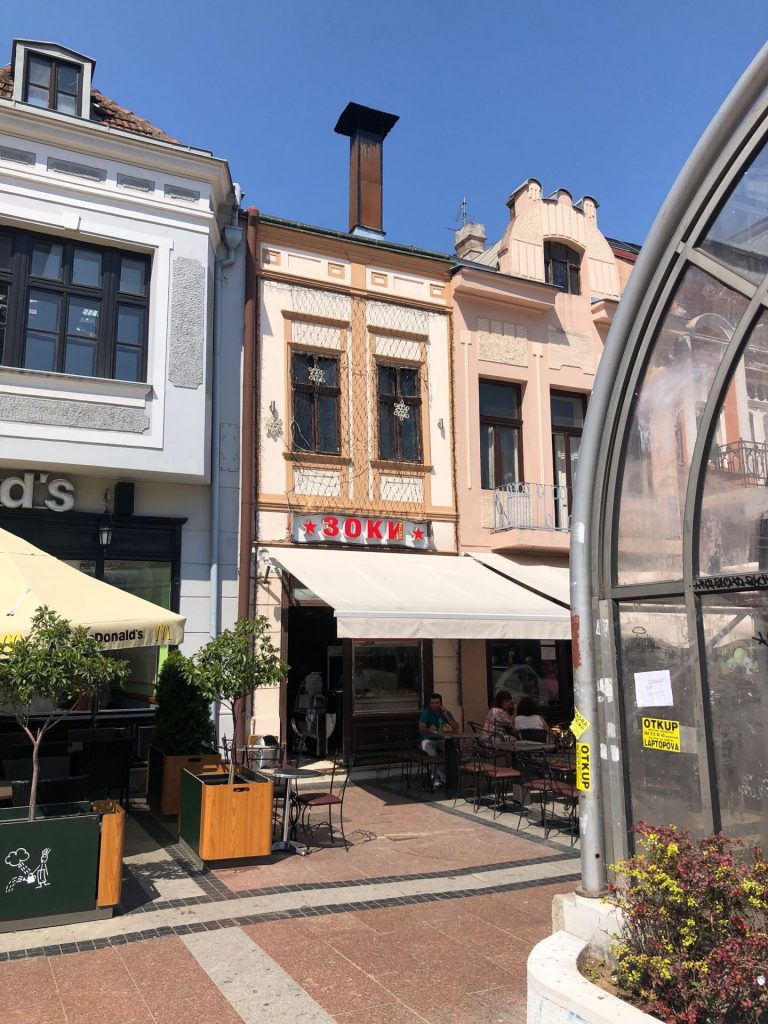
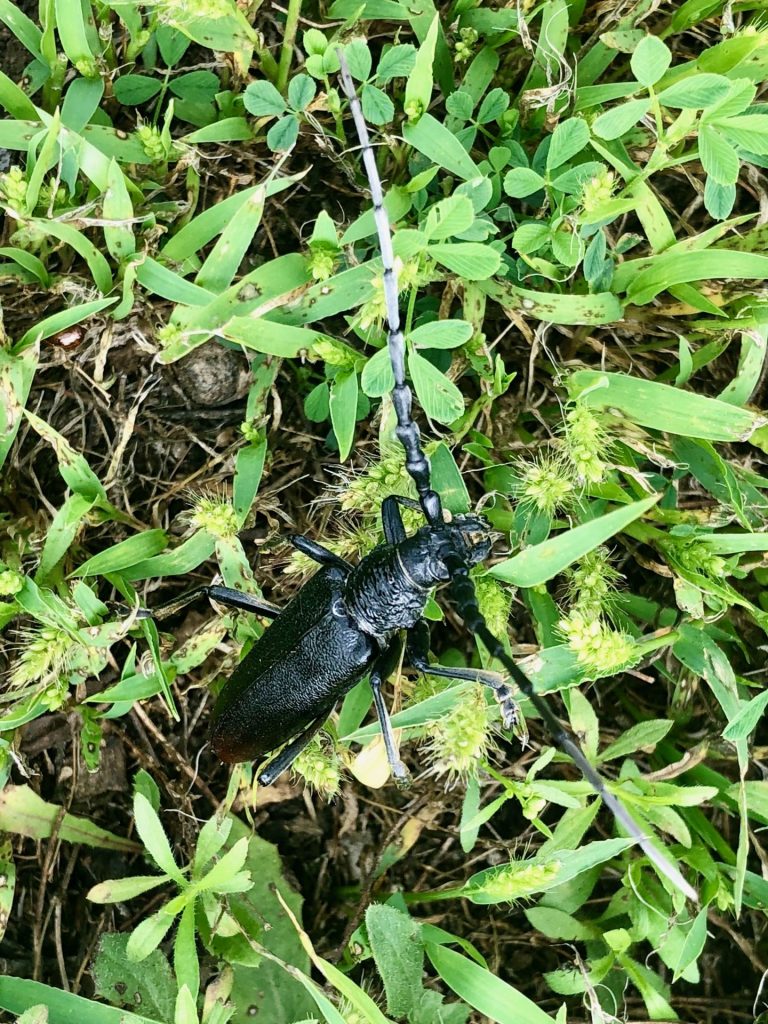
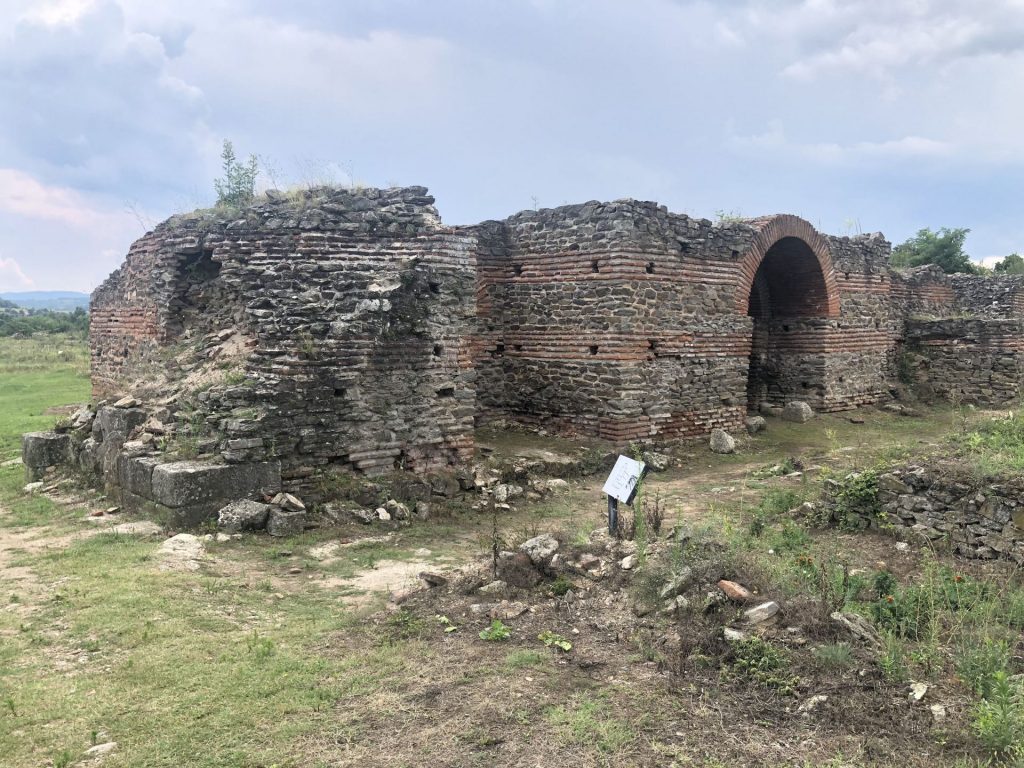
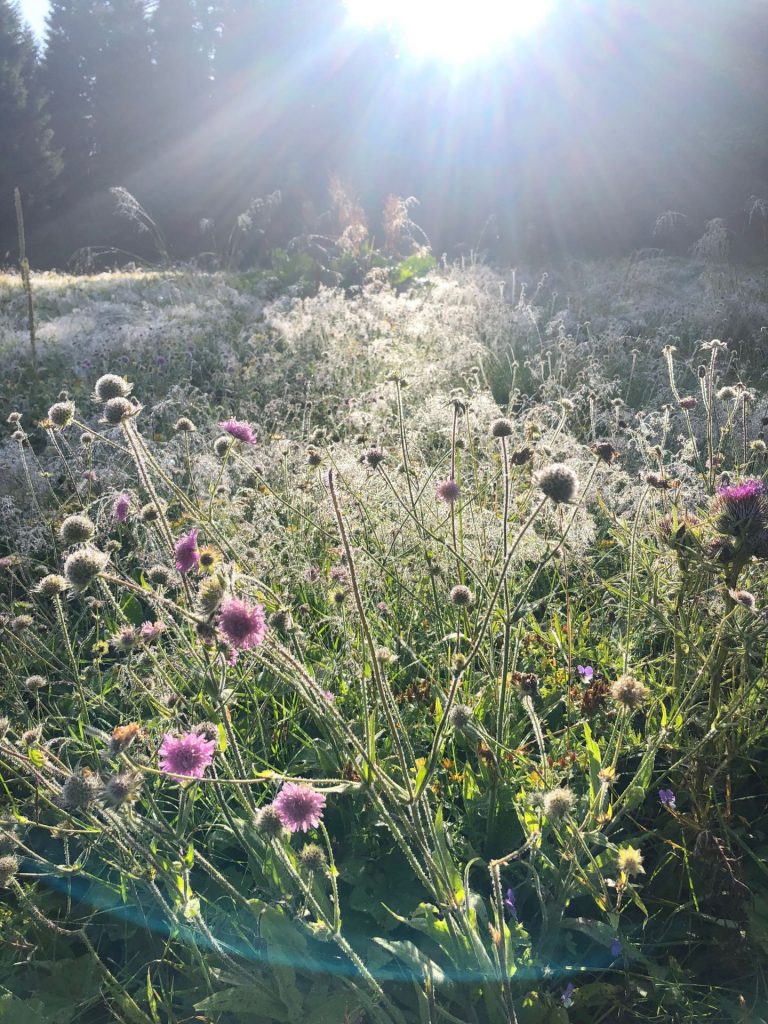
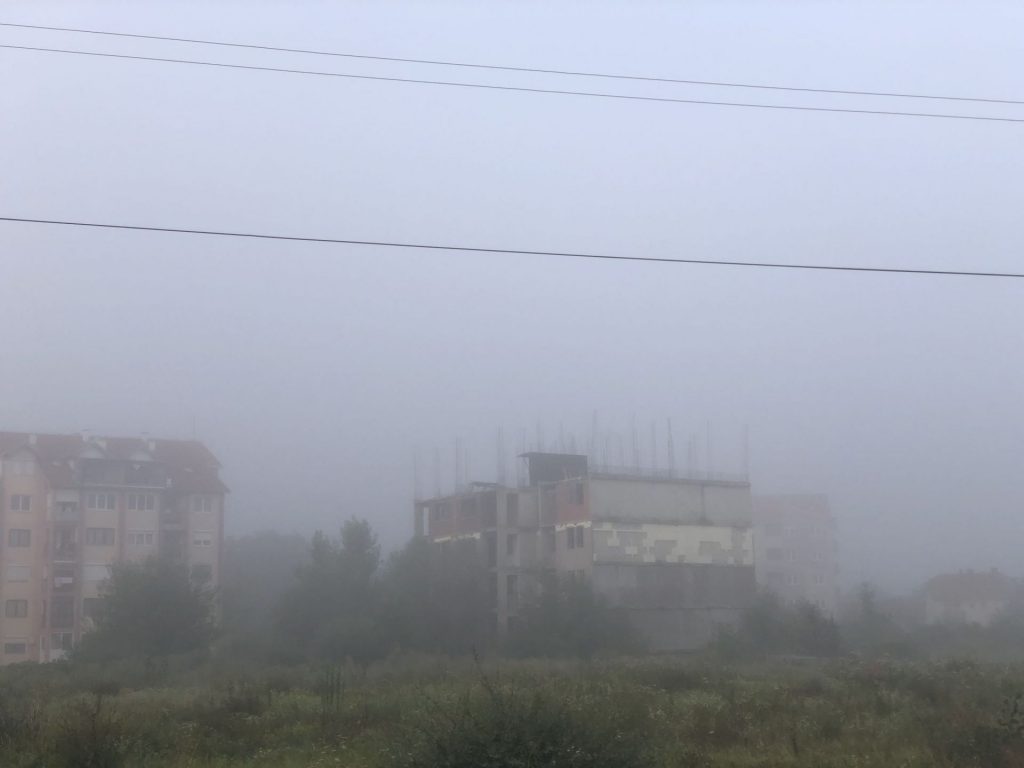
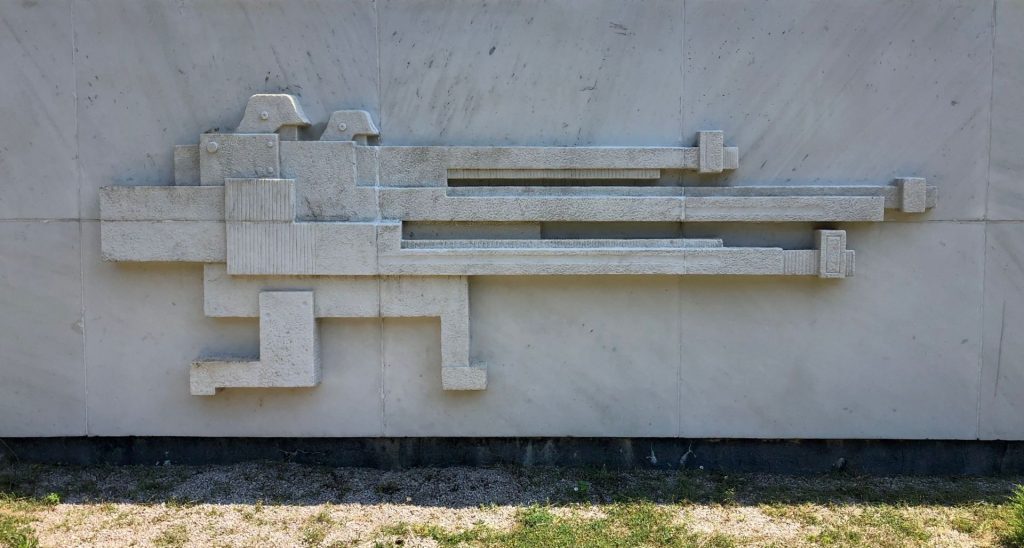
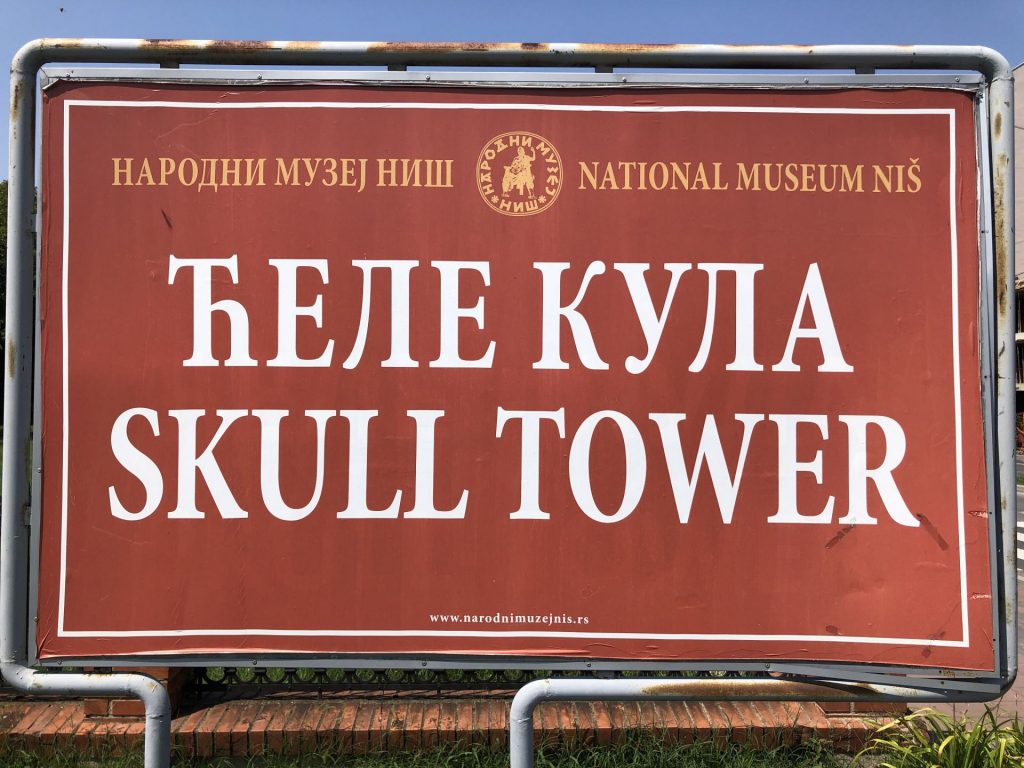
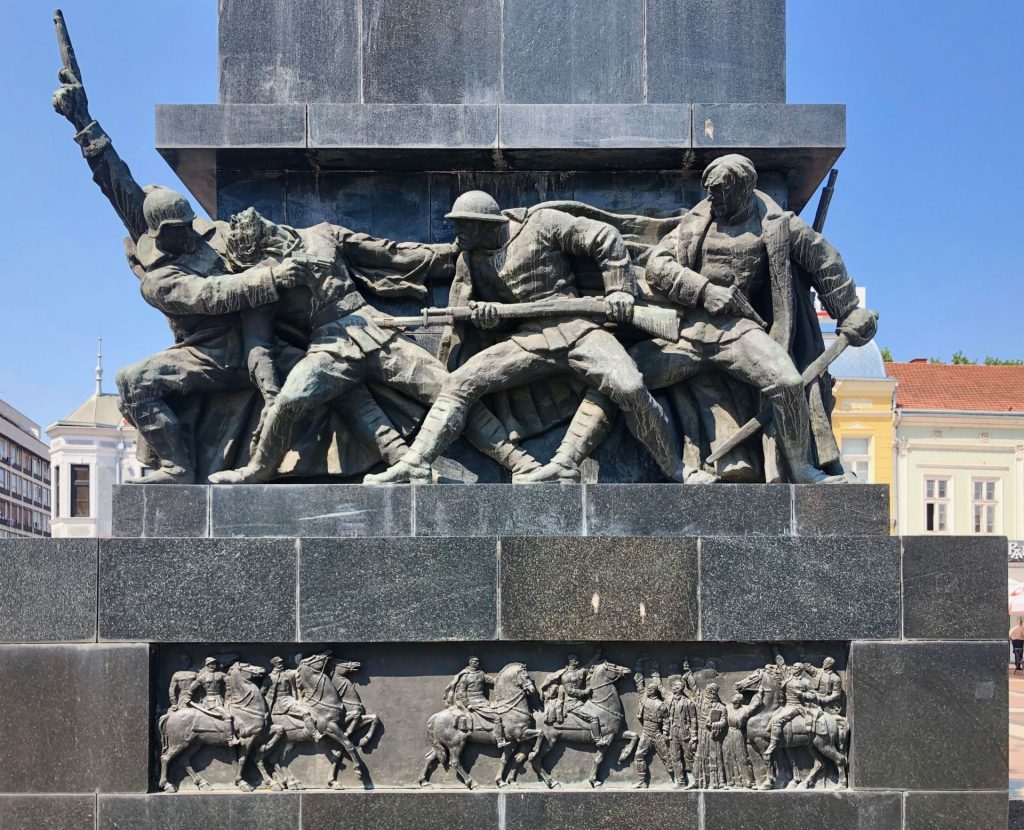
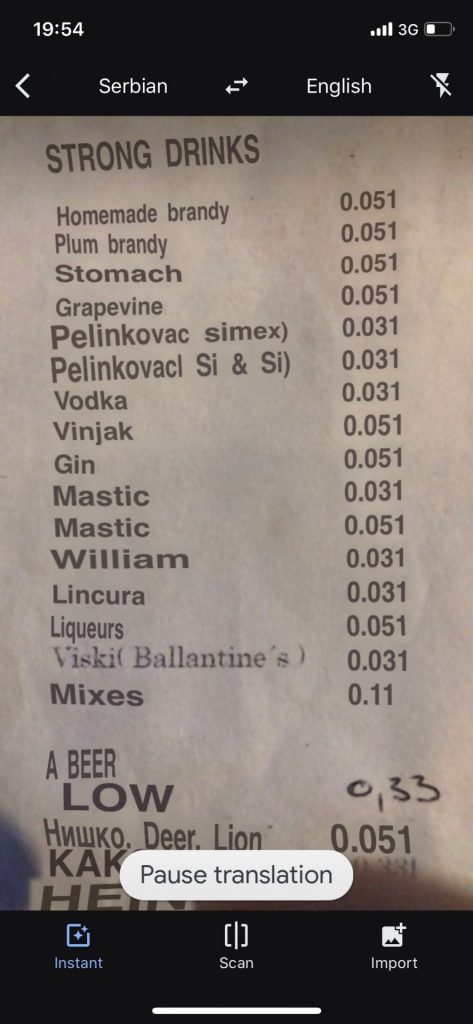


Hi
Great Blog again very interesting and very different
Stay safe
D&G Polly Cat?
Thank you Gill.
It’s always good to hear from you.
It’s certainly an interesting place, although Bulgaria stole it for me.
Best wishes. Kelvin.
Yo KC. Cool photos ( your quite good really)
The issue I have getting to read your beautiful ramblings is I never seem to be on my own for two secs, when some bugger distracts me. Anyway Serbia. Yes I like it! Bloody fascinating. Send me pic of Polly dog in the grass. Love it.
Love to you all. I’ve been on my own for over an hour! Woohoo!! Xx
Acky
Always good to hear from you.
The Bulgarian posts are worth looking back to too if you find some time.
Customers? Running a business would be so easy without them.
KC
Your flowers are Gentians…I think. I love the meadow shots in the low, dew spangled morning light.
Serbia sounds a country of contrasts. I guess being in the landlocked sector of the former Yugoslav block makes them very conscious of maintaining their hard won identity in the ongoing aspiration of full EU membership.
Love this week’s addition to your European barn collection, much more varied than those to be found here.
It looks as if the Princess is fairly chilled theses days.
Gentians. Ah yes, they certainly look similar. Thank you.
It’s quite a smart place Serbia. Surprisingly so.
It’s a shame we won’t get to Bosnia, I suspect life’s harder there.
Now though we need to properly plan out route. We have to be in one of several certain countries for at least ten days before we can enter Austria. Croatia isn’t one of them but Slovenia is.